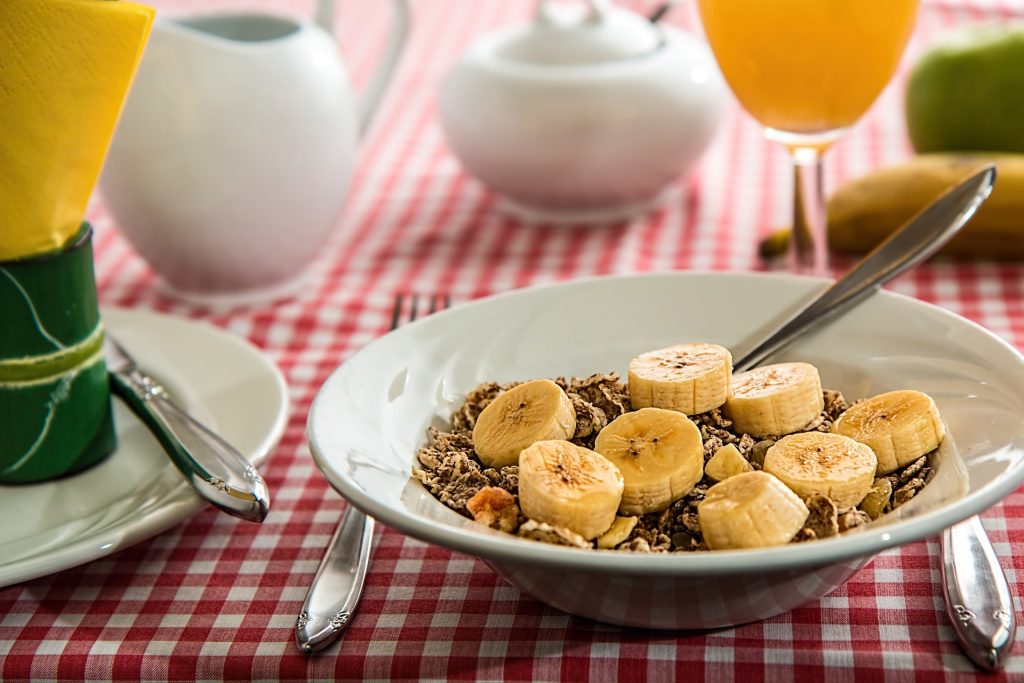
What’s in Your Child’s Breakfast Cereal?
While most children’s cereals are fortified with beneficial vitamins and minerals, many are also often highly processed, can be loaded with sugar, and have little to no fiber. Recently, cereal manufacturers have been pressured to modify their recipes to make whole grain the first ingredient and to reduce the sugar per serving. Yet, many popular children’s cereals still remain relatively high in sugar and low in fiber. Additionally, children often eat more than the suggested 3/4 cup — 1 cup serving size for most cereals, providing them with even more sugar and calories than the label would indicate they are consuming.
Help your child learn to select healthful breakfast cereals by reading the labels and aiming for cereals lower in sugar and higher in fiber. If your child prefers sweet cereal, try tossing in some fresh berries, dried cranberries, or raisins. Save the “sugary” cereals for a special treat or dessert.
Compare sugar and fiber in your child’s favorite breakfast cereals using the table below as an example.
| Good | Better | Best | |
| Amounts Per Serving | |||
| Sugar (g) | 6 | 1 | 0 |
| Fiber (g) | 2 | 3 | 6 |
| Example | Oat Squares | Toasted O’s | Shredded Wheat |
Cereal is convenient and certainly can be part of a balanced breakfast. However, try to aim for cereals lower in sugar and higher in fiber when serving for breakfast.
Beware of Marketing
“Cereal companies have improved the nutritional quality of most cereals marketed directly to children, but they also have increased advertising to children for many of their least nutritious products,” according to a report by the Yale Rudd Center for Food Policy & Obesity.
Read the Label
Try to choose cereals with (per serving):
- Less than 6 grams of sugar
- More than 2.5 grams of fiber
- Good old fashioned oatmeal is always a fine alternative.


